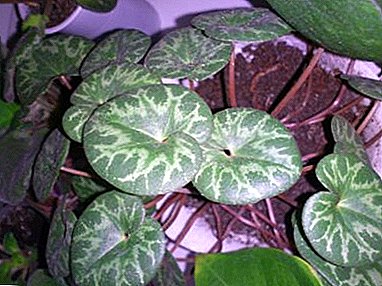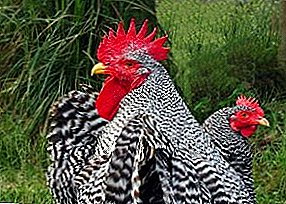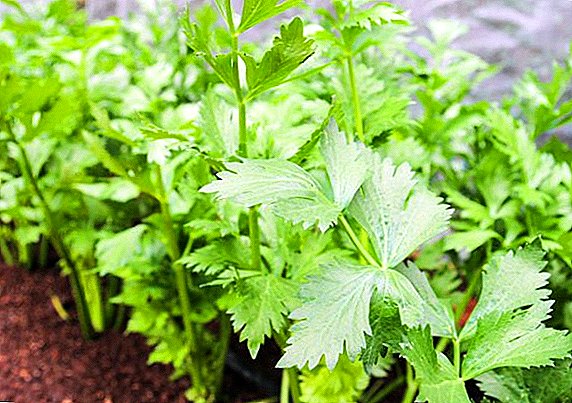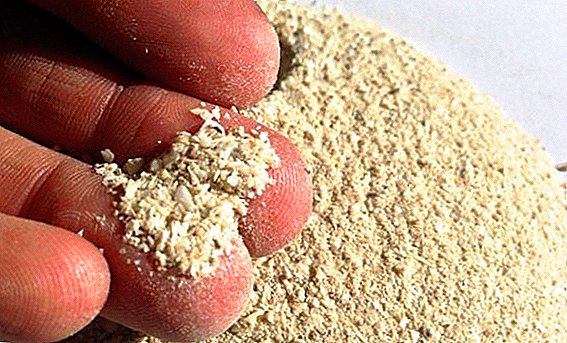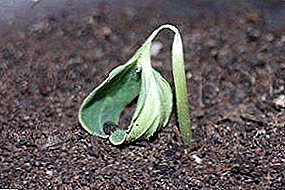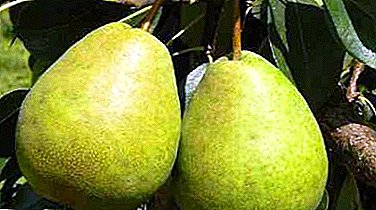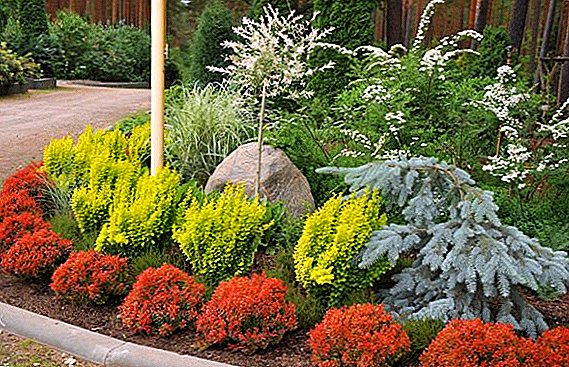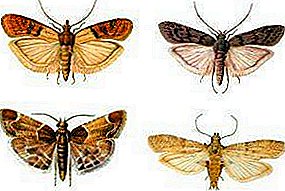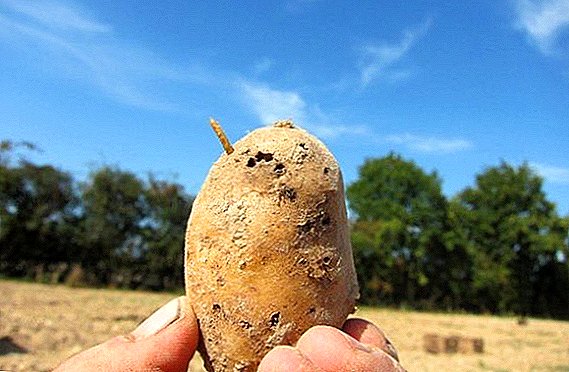 Besides people, potatoes are loved not only by Colorado beetles, but also by wireworms. The first eat the ground part of the potato bush. They are known to all, and people know how to get rid of them.
Besides people, potatoes are loved not only by Colorado beetles, but also by wireworms. The first eat the ground part of the potato bush. They are known to all, and people know how to get rid of them.
But the latter operate under the ground - they are rarely seen, but they cause harm no less than the first. They are difficult to detect, but when they do fall into the potato, it is usually too late, and it can not be saved.
How to recognize
The fight with the wireworm can be successful if one recognizes its appearance on the potato field in time. You need to know this enemy by sight. The wireworm is a larva of a click beetle.
The bugs themselves do not harm, the larvae are dangerous to the garden plants. They look like yellow and brown worms in length from 1 to 3 cm or more. Their thin bodies are covered with hard shell and this is reminiscent of wire, hence the name.
Did you know? There are about 10 thousand species of click beetles. But only a few dozen malicious larvae.
 Acting underground, the wireworms remain invisible to humans. But you can recognize their presence in the garden:
Acting underground, the wireworms remain invisible to humans. But you can recognize their presence in the garden:- Potato tubers are punched with holes 1-2 mm in diameter. The pest was already there and moved to the next bush.
- If the potato tops withered, then the bush must be urgently excavated. Perhaps the enemy is still there, you need to destroy him so that he does not move further along the garden.
- The wireworm likes to feast on weeds, especially wheat grass. Having found a weed on the field, it must be dug together with the roots, on which harmful larvae can dwell.
What is dangerous
If the potato field is infected, by the time of harvest, the gluttonous pest manages to pierce up to 60% of the tubers with its strokes. Bacteria and fungal infections that contribute to decay get into these holes.
Such potatoes spoil quickly and cannot be stored. The wireworm also likes to gnaw through the juicy roots, so that the tubers intact by them do not receive enough nutrients and do not grow, which is reflected in the harvest.
Although of all vegetable crops, this worm prefers potatoes, it is not averse to eat the roots and roots of other crops: cabbage, onions, lettuce, cucumbers, carrots, beets, radishes, radishes and daikon.
Moreover, it is dangerous throughout the growing season - from planting to harvest, and gnaws absolutely everything: sown seeds, seedlings, young roots and stems. 
Development cycle
In the spring, after hibernation, female click beetles lay small white eggs (0.5 mm). A suitable place for laying can be a crack in the ground, a bunch of last year’s weeds, or lumps of soil. One female lays up to 200 eggs.
Larvae hatch after 20-40 days. They develop in the earth from 3 to 5 years, calmly survive the winter, and they do not care for the most hard frosts. In their first year, the wireworms do not damage the cultivated plants.
From the second year on, they increase in size, become as hard as wire, and move quickly. During this period they are already very voracious and dangerous for vegetables. In the fourth year, the larva pupates, and in the spring the pupa reincarnates into a beetle. 
Prevention
Preventive techniques are very important, because they reduce the amount of wireworm on the site, scare them away from potatoes and minimize damage to tubers. For this you need:
- carefully clean the garden after harvest. If you leave untied potato tops, heaps of weeds and root crops for the winter, then all this will become a comfortable dwelling place for insects and a place for their wintering;
- dig up the site before planting and after harvesting vegetables. In the autumn you need to dig deep, to the depth of the shovel, in order to extract the beetles, larvae and eggs to the surface, where they will freeze out during the cold weather. Thanks to spring shallow digging, they become easy prey for birds or perish in the sun, and weed roots are removed - their place of residence;
- summer weeding and loosening of the soil allows you to get rid of the grass, the worms and eggs that die in the sun. If the weed still has grown, you can use the "Roundup" to remove it.
Important! Do not plant the plants too thickly, otherwise you will need to weed the beds more often.

Agrotechnical techniques
Agrotechnical actions are closely related to prevention and are no less important.
- If the size of the plot allows, then after 2-3 years it is necessary to change the place of planting potatoes. It is better to plant after those plants that are destructive for insects: alfalfa, clover, lupine, peas, beans and other nitrogenous legumes or rapeseed, mustard, buckwheat.
- When planting, put a handful of onion peel into each well of potatoes - the larvae do not like it very much.
- The wireworm likes acidic soil. So, you need to reduce the acidity, sprinkle with lime on the ground, and dig or pour it into each hole. To do this, and ash.
- Mineral fertilizers or organic substances that contain ammonium salts help to fight the underground villain.
- Putting mustard powder, an armful of onion peel or pine needles into the hole together with the planting potatoes.
- Plant between the rows of potatoes marigolds, the smell of which does not like pests, and legumes, on whose roots nitrogen-releasing bacteria live, which scares the wireworm.
Important! Legumes, such as bush beans and low peas, can be planted in one hole with potatoes.

Wire trap
- In the spring, make small holes in the ground, fill them with last year's grass, straw or hay, water them and cover them with something, for example, with boards. In a couple of days, the larvae will gather in these traps in search of food and warmth. Now all this grass together with its new inhabitants should be gathered and burned. Everything needs to be repeated several times.
- 14 days before planting potatoes, sow barley, oats or corn in that place with several seeds every 60-70 cm. When sprouts appear, they should be dug out and worms should be picked up on the roots.
- At a depth of 15 cm, bury the pieces of potatoes, beets or carrots (1 piece per 1 sq. M), marking each place with a twig, and leave for 3-4 days. After this, it is necessary to dig up slices of root crops together with the worms gnawing them.
- Prick pieces of their favorite potato on the shelves and plunge it into the ground so that the end of the stick remains outside. Checking the bait, collect pests from them and then send them to the ground again, only in a new place. This can be done throughout the summer.
- Glass jars with the same bait at the bottom to bury at the very neck in the shade in the area. After 2-3 days, they should be freed from any larvae and replaced with fresh pieces of vegetables, so as not to lose their appetite with greedy worms.
- Potato pieces are strung on a fishing line at a distance of 10 cm, placed in a groove 10-15 cm deep and covered with earth. The catch is collected every 4-5 days and scalded with boiling water or burned.
 Such bait traps should be used until all the larvae are selected. This is a time consuming but very effective way of getting rid of all generations of wireworm in your garden.
Such bait traps should be used until all the larvae are selected. This is a time consuming but very effective way of getting rid of all generations of wireworm in your garden.Important! In the spring a trap for beetles is very effective - an oilcloth or a plate with a very thick sugar syrup spilled on it. Beetles fly and stick.
Pest drugs
- "Basudin" and "Diazonin" 10 RG - similar drugs, broad-spectrum insecticides: destroy many leaf and soil insect pests, are used for different plants.
- "Prestige", "Cruiser", "Celeste" - special means, which is treated with potato tubers before planting, to protect against wireworms.
- From "Aktar" make a solution and pour water on them before planting potatoes.
- Metarizin is a biological agent for fighting soil insects. It consists of pathogenic fungi that kill the wireworm, but are not dangerous for the useful inhabitants of the underground.
- "Provotoks" fights only with the larvae of the click beetle, but is safe for other living organisms.

Did you know? Not so long ago, the most popular means of fighting wireworm was dust, but now it is forbidden. It turns out that it is very toxic and tends to accumulate in the soil and in the human body.
Folk remedies
Unlike chemical preparations, folk remedies are safe for both the land and plants:
- The wells before planting and potato bushes during growth are watered with infusions of the following herbs: nettle (500 g per 10 l of water), dandelion (200 g per 10 l), coltsfoot (200 g per 10 l), celandine (100 g 10 l). Need to insist 12 hours, and from the celandine - 3 days.
- Planting potatoes treated with extract of wormwood and celandine.
- A solution of potassium permanganate is poured over during planting and 15-20 days after that.
- Once in 5 years the site for potatoes sprinkled with salt and dug.


